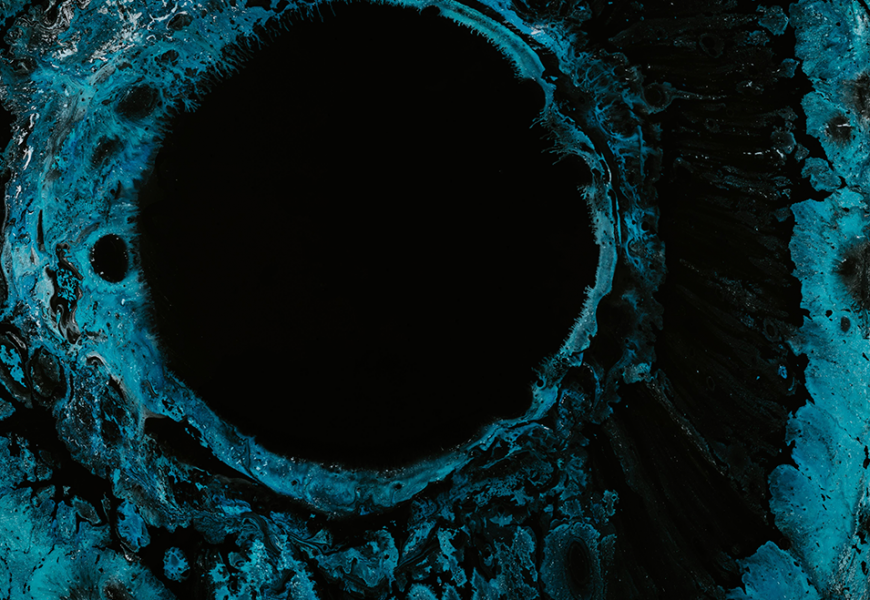In an unseen(unpublished) image, magnetic fields are seen at the edge of the black hole in galaxy M87, providing new information about its structure.
By the Astronomy Deparment
/ mfuentes@astro-udec.cl
/ Photograpies: Courtesy
The Event Horizon Telescope (EHT) collaboration, which produced the first image of a black hole, has revealed a new view of the massive object at the center of the galaxy M87: how it looks in polarized light. This is the first time astronomers have been able to measure polarization, the “signature” of magnetic fields, so close to the edge of a black hole. The observations are key to explaining how the galaxy M87, located 55 million light-years away, can launch highly energetic jets of material from its core.
On April 10th, 2019, the first image of a black hole was published, revealing a bright ring-shaped structure with a dark central region: (the shadow of the black hole) the black hole shadow. Since then, the EHT collaboration has delved into data on the supermassive object collected in 2017 and it has found that a significant fraction of the light around the black hole M87 is polarized.
“We are seeing unique evidence for understanding how magnetic fields behave around black holes,” says Monika Mościbrodzka, coordinator of the EHT polarimetry working group, and academic at Radboud University in the Netherlands.
The EHT collaboration researcher, Venkatessh Ramakrishnan, who is also currently doing a post-doc at the Astronomy Department of the Universidad de Concepción, explains that “polarization tells us about the role of magnetic fields in the Universe, which are important in order to understand the physics of electrons and other particles. This result is very unique, for it describes the closest magnetic fields to the supermassive black hole M87, which help us understand its evolution and the role of Albert Einstein’s general relativity in such strong gravitational regions.”
This is also pointed out by Iván Martí-Vidal, coordinator of the EHT polarimetry working group: “This work is an important milestone: the polarization of light carries information that allows us to better understand the physics behind the image we saw in April 2019, something that was not possible before. Revealing this new image in polarized light has required years of work due to complex techniques involved in obtaining and analyzing the data.”
However, what do we mean when we talk about polarized light? Light becomes polarized when it passes through certain filters, such as polarized sunglasses lenses, or when it is emitted from hot, magnetized regions of space. The same way that polarized sunglasses help us see better by reducing glare from shiny surfaces; astronomers can sharpen their view of the region around the black hole by looking at how light originated there is polarized. Specifically, the polarization allows astronomers to map the magnetic field lines present at the inner edge of the black hole.
“The recently published polarized images are key to understanding how the magnetic field allows the black hole to ‘eat’ matter and launch powerful jets,” explains Andrew Chael, a member of the EHT collaboration.
In order to conduct this research, eight telescopes around the world, including ALMA and APEX in Chile, were linked to create a virtual Earth-sized telescope, the EHT. The impressive obtained resolution is equivalent to the resolution needed to measure the length of a credit card on the surface of the Moon. This allowed the team to directly observe the shadow of the black hole and the ring of light around it, clearly observing that the ring is magnetized. The results were published in two separate articles in The Astrophysical Journal Letters.
Last modified: 29 de agosto de 2025






